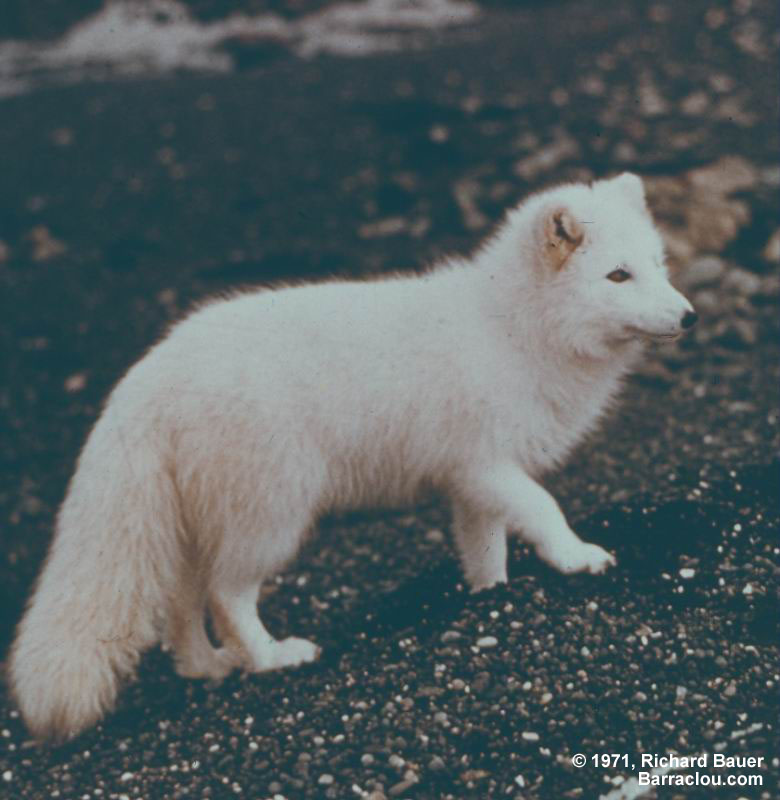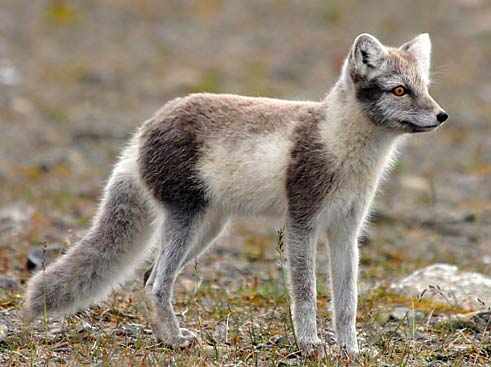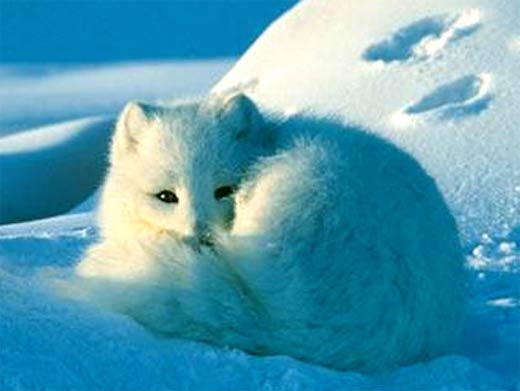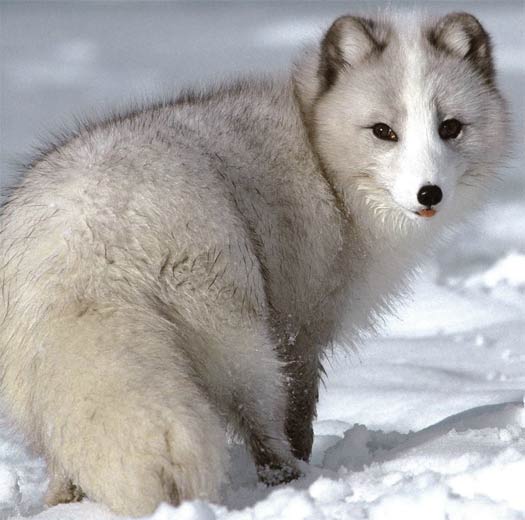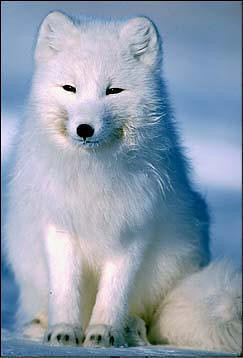Tuesday, January 24, 2012
Help Save the Arctict Foxes!
You can help the Foxes by helping prevent Global Warming and the Produce of fur clothing.
You can also adopt an Arctic fox by either clicking the picture to the right------------->
or CLICK HERE
You can also adopt an Arctic fox by either clicking the picture to the right------------->
or CLICK HERE
More info
Arctic fox, also called White Fox, or Polar Fox, (species Alopex lagopus), northern fox of the family Canidae, found throughout the Arctic, usually on tundra or mountains near the sea. In adaptation to the climate, it has short, rounded ears, a short muzzle, and fur-covered soles. Its length is about 50–60 cm (20–24 inches), exclusive of the 30-centimetre tail; and its weight is about 3–8 kg (6.6–17 pounds). Coloration depends on whether the animal is of the “white” or the “blue” colour phase. Individuals of the white phase are grayish brown in summer and white in winter (see photograph), while those of the blue phase (blue foxes of the fur trade) are grayish in summer and gray-blue in winter.
The Arctic fox is a burrow dweller and may be active at any time of day. It feeds on whatever animal or vegetable material is available and often follows polar bears to feed on the remains of their kills. It usually breeds once yearly, a litter of up to 14 dark-furred pups being born between April and June; gestation is about 52 days.
The Arctic fox is a burrow dweller and may be active at any time of day. It feeds on whatever animal or vegetable material is available and often follows polar bears to feed on the remains of their kills. It usually breeds once yearly, a litter of up to 14 dark-furred pups being born between April and June; gestation is about 52 days.
Monday, January 23, 2012
How can you help save the arctic fox?
You can donate money to an endangered animal foundation or try to stop global warming so they can stay in their natural habitat. You can also boycott the selling of amimal fur because they are being hunted. Save them today.
Thursday, January 19, 2012
Polar foxes disapearing in Scandanavia
From 1998 to 2008, a total of 241 Arctic fox litters were registered in Norway, Sweden and Finland. Of these, 111 were in Norway and 130 in Sweden. Only one litter was registered in Finland.
In 2009, no litters were registered in Norway, due to the collapse of populations of lemmings and other small rodents in 2008/2009. In Sweden only two litters were registered, and in both cases pup mortality was very high. No litters have been registered in Finland since the late 1990s.
The Arctic fox is critically endangered: this species and the wolf are Norway’s most seriously threatened mammals. Despite many years of complete protection, the Arctic fox population in Fennoscandia has not recovered. On the contrary, the last 20 years have seen a further decline in numbers.
Tuesday, January 17, 2012
Why are the Polar Foxes Endangered?
Arctic foxes are endangered because people kill them for their fur. There isn't a lot of food for them either.
Nutrition
The Arctic fox, while classified in the order Carnivora, is more accurately an omnivore. Its diet consists primarily of rodents, but it will also eat ground-nesting birds and their eggs as well as berries, fish, invertebrates, worms, edible flotsam, crustaceans trapped in tide pools, marine mammals and carrion (McGonigal, 2001). It will take any available animal food, whether it is alive or dead. The primary prey of the Arctic fox during the summer months are the lemming, Arctic ground squirrels, and hares, although the fox is a key predator of ringed seal pups during the winter (Nowak, 1999). A family of foxes can consume dozens of lemmings in a single day. The Arctic fox caches food during periods of surplus in the event that prey later becomes scarce. During the winter, carrion such as dead beluga whales is the main food source. The Arctic fox will often trail polar bears on the sea ice and wolves on land to eat of the remains of seal kills (Sale, 2006). The fox's coat allows it to blend in with its surroundings, making it easier for it to sneak up and pounce on its prey. The fox typically does its foraging alone or in pairs. The Arctic fox has a complete digestive system that allows it to effectively digest meat. It also has a complete circulatory system that allows it to transport nutrients. Like most mammals, it stores its food as fat and simple sugars.
Some facts about the arctic fox
Subscribe to:
Posts (Atom)

